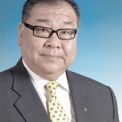
- Creation and promotion of the ‘Kinox’ brand
In 1980, KL Sun created the brand ‘Kinox’, the ‘K’ stood for the company’s English name ‘Kin Hip’ while ‘inox’ was the short form of the French word ‘inoxydable’, the equivalent of ‘stainless steel’. ‘Kinox’ was easier to pronounce than ‘Kin Hip’. A Chinese name ‘建樂士’ was dubbed by Cantonese transliteration. In 1980, the brand was registered in Hong Kong and Beijing and also recognized in the UK. Kin Hip used to print on its products the trademark ‘LH’. Unfortunately ‘LH’ was not a catchy name, which made promotion difficult and its products less than popular in the market. Clients tended to welcome the new brand ‘Kinox’, which saved some lengthy introductions for Kin Hip when it was promoted to clients, and which helped the products enter the chain store market. The ‘Kinox’ trademark was engraved on the tooling of the products. At the request of its clients, Kin Hip sometimes printed the clients’ trademark on the packaging, such as the US distributor Vollrath. Should a trademark be requested to be engraved on the tooling, Kin Hip would decide upon the order size. Now Kin Hip did direct retailing only in the mainland. It relied on agents for marketing in Southeast Asia, Europe and America. KL Sun took Apple iPhone’s supply chain to proclaim the huge profit brought about by retailing. However, he confessed that retailing was not easy to develop. It was vital to launch a new product according to the trend, which would affect Kin Hip’s sustainability.
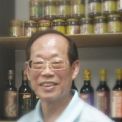
- Production of cans, preserved gingers and soy sauce.
The iron used to make Amoy’s cans was ordered and imported from overseas with vessels divided into half-pound, one-pound and five-pound variants. The cut iron plates were fed into the machines to undergo processes known as flanging, lidding and pressure leak testing. Afterwards, empty cans were stored in warehouses. While half-pound and one-pound cans were manufactured by fully automated machines, the five-pound cans had to be processed manually. Amoy was the first company in Hong Kong to produce canned dace with salted black beans. Wong Wing Man thought that Amoy’s canned dace with salted black beans tasted delicious and gave off a mouthwatering aroma when deep-fried with lard and Amoy’s salted black beans.
After relocating its plant from Ngau Tau Kok to Tsuen Wan, Amoy began buying cans from Singapore rather than making the containers itself. As a result, the company eventually ceased production of cans for dace with salted black beans. From the 1950s to the 1960s, Amoy produced a wide variety of canned foods including pigs’ trotters with ginger, shark’s fin, minced fish, longans, lychees, pickled shallots, bamboo shoots, mixed vegetables, dace with salted black beans, salted black beans, miso and pickled cucumbers. The white cucumbers used to make this last delicacy were imported from China before being preserved by male and female casual staff working overtime shifts. Different kinds of food were either canned manually or by machines in the pickle room and then sent to another department for vacuum sterilisation and capping by machines. Female workers in the pickle room canned the food while their male colleagues transported the goods. Amoy’s canned food was not only sold locally but also exported overseas.
Amoy’s preserved gingers were very expensive and so tended to be exported. Preserved gingers were made of ginger cubes which were divided into wet and dry piles and graded according to size. All gingers used were imported from China. After the raw gingers were peeled manually by the female workers, they were preserved in a big pool with salt. Technicians had their own secret recipe for making preserved gingers, often testing the temperature of the sugar being heated with their bare hands before adding the ginger cubes.
Employees’ first step in making soy sauce was to soak soya beans in water during the day and then pick them up and leave them in the hall before clocking off and heading home. At around 5 to 6 a.m. the next morning, the beans would be steamed in an oven. The cooked beans were then placed on the floor to cool, ploughed loose, mixed with flour, fermented and then left to get mildewed. The male workers took charge of these steps while their female colleagues hard-pressed the remains of the beans to help them dehydrate. The technicians making soy sauce also had their secret techniques. To this end, they often sprayed the beans with fluid to reduce the temperature or turned up the oven to increase the heat according to the demands of the fermentation process.
Between the 1940s and the 1950s, Amoy’s boss was a native of Fujian. As a result most of the company’s male workforce was predominantly made up of Fujianese people mixed with a few locals or migrants from Chaozhou. Surprisingly, there were very few female workers from Fujian.
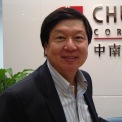
- Changes of sales mode: street marketing, TV commercial and products expos
Hong Kong was Chung Nam’s major market during its early years. In the 1950s, the company hired salesmen to carry out street marketing after training by Chong Ching Um. In those days, retail shops first had to buy watches on credit. While the retailers could not return the less popular models, they could negotiate price reductions with Chung Nam. When Chong Hok Hoi was at school during the 1960s, he often took summer jobs with the family business. Carrying a leather case weighing 20-30lbs, he accompanied company salesmen to shops all over Hong Kong. Offering him an excellent opportunity to observe and learn how to communicate with customers, the work gave Chong Hok Hoi a valuable lesson about sales work. All watches promoted through street marketing were Chung Nam-exclusive agency brands, mostly Octo and Tugaris watches. Roamer timepieces were not introduced until the 1990s. Following the U.S. moon landing in 1969, the demand for Octo Space Master watches was so impressive that the supplies were rationed to retail shops. Chong Hok Hoi recognized the importance of close wholesaler-retailer ties. He believed that customer relationships could be built up through social activities such as offering cigarettes, discussing horse racing tips, having tea together and even sponsoring travel trips for retail shop owners and their staff. By this time, Chung Nam had also begun placing advertisements on tram, magazine, cinema, radio and TV, and even hired artist George Lam to star in its TV commercials. Chong Hok Hoi still remembered the classic Octo advertising script: "No later, no sooner! With an Octo watch, time is just right!.
As Chong Ching Um was a director of the Chinese Manufacturers' Association of Hong Kong (CMA), Chung Nam had participated in the Hong Kong Products Expo. Chong Hok Hoi did not involve a lot in the preparation for the products expos but he thought that these activities were less important than the watch and clock fairs. Local watch and clock makers had not been allowed to exhibit at overseas exhibitions for many years. To address the issue, some 10 directors of the Hong Kong Watch Manufacturers Association (HKWMA) agreed to promote their products to overseas buyers by staging their own Hong Kong Watch and Clock Fair (HKWCF). The inaugural 1982 event took place in rented rooms at the Miramar Hotel which was paid by association directors from their own pockets. Chong Hok Hoi was involved in the preparation of this first HKWCF at which Chung Nam displayed a range of finished watches, watch bands and watch cases. So well received were these early HKWCF events by overseas buyers that the Hong Kong Trade Development Council joined forces with HKWMA and began to co-organize future exhibitions. There was a huge surge in global demand for low-priced watches from Hong Kong in the 1980s. Chung Nam’s major clients at this time included top U.S. department chain shops such as Kmart and Wal-Mart.
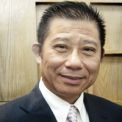
- Engaging in sales business in North America and Mainland China
Leung Wai Ho’s failure to make a mark with North American watch buyers. With the issue of the UK’s 1997 handover of Hong Kong to China still to be resolved, 1983 was a year of political instability for the Territory. Leung Wai Ho’s family emigrated to Montreal in Canada in 1984. As Montreal was close to New York, it was a convenient base from which to contact Dailywin’s US customers. The fact that the city was located in Canada’s French-speaking zone also helped Leung Wai Ho’s children learn French. Leung Wai Ho bought the SAGA brand in Canada and given it a Chinese name. From 1986, he focused on promoting the brand’s sales in Canada. As he could not oversee the business on the spot and North America’s vast population and landmass made advertising and marketing very expensive, the venture eventually came to an end. Leung Wai Ho retained his faith that Hong Kong was the ideal place for developing a retail business. Learning from his failure in North America, Dailywin began expanding its retail operations in mainland China with effect from 1992 onwards.
Developing China retailing on a consignment basis. In 1992, Leung Wai Ho accompanied a party from the Hong Kong Trade Development Council to the mainland to promote retailing. While there, he secured sales space in Guangzhou’s Nan Fang Building which had roughly the same status as Hong Kong’s Shui Hing and Sincere department stores. Leung Wai Ho subsequently rented a shop in Guangzhou’s Shangxiajiu Road, opening a flagship store to promote SAGA watches. Having many years of production and sales experience, believing there was a huge potential market in China, and serving as Vice President of the CHA, Leung Wai Ho had every confidence he would be successful in applying for his sales quotas. As a result, he worked hard to promote his mainland retailing activities.
Dailywin’s 1995 listing on the London stock market. Dailywin spent a full year trying to raise funds to develop its domestic sales in China and listed itself on the London Stock Exchange in 1995. It subsequently used all funds raised to expand the Dongguan factory operation. In those days, the UK market had a lower listing threshold, while the Hong Kong Stock Exchange did not welcome small companies capable of earning less than $50,000,000 within three years.
Dailywin began mainland retailing. Dailywin’s China domestic sales team began by focusing on consignments to shopping malls with all selling conducted through wholesalers. As Leung Wai Ho was not familiar with the mainland market and lacked experience in retailing, wholesalers often took the goods and defaulted on payment. This cost him considerably in terms of both goods and money. Between 1994 and the end of 1996, Leung Wai Ho lost a total of $50,000,000 in this way. After this failure, Dailywin was listed in Hong Kong in 1997 to raise funds for a comeback. From 1997 onwards, Leung Wai Ho directly managed the company’s mainland retail stores, using a “shop-in-shop” mode to open 25 shops in big cities across China. Leung Wai Ho was well aware that as a manufacturer he lacked retailing experience, and therefore hired full-time sales managers to run the shops. One of the managers he employed had previously worked in Giordano. Leung Wai Ho rented spaces of 20 to 40 square metres in each large shopping mall. He also co-operated with foreign brands such as Timex, Casio, Disney, Elle and Esprit to market lifestyle watch brands. Labelled Time Zones, these retail corners collected and analysed sales information on a daily basis. Leung Wai Ho admitted that the Guangzhou flagship store was not suitable for selling brand watches and that he had chosen the wrong location.
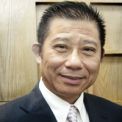
- Quitting the retail market. Difficulties of building successful own brands
Leung Wai Ho quit the China retail market. Leung Wai Ho claimed that his attempt to enter retailing was a “money burning” business that had cost him around $200 million between 1997 and 2003. Sadly, profits earned from overseas’ businesses were insufficient for him to “burn money” in China at such rates. In 2003, Dailywin’s retail stores in China hit a peak of 450, with goods on display having a total value of over $90 million and some 2,000 staff running shop operations and warehousing. Not knowing when returns would materialise and lacking the financial muscle to sustain heavy losses for much longer, Leung Wai Ho finally sold the retail business in 2003. The buyer was a large locally listed watch manufacturer called Peacemark.The difficulty of building successful own brands. Leung Wai Ho bought into the idea of creating Dailywin’s own brand, agreeing that retail profits were much higher than manufacturing equivalents. However, only producers who lived within their financial means could hope to succeed in such a market. At this time, Leung Wai Ho is no longer willing to take risks as he grew content with earning smaller profits. He continued to believe that brand building is a long-term enterprise involving huge investment capital and with returns only likely to come some 50-60 years later. As success required some understanding of retailing, a novice’s chances of success are ultimately not high. Leung Wai Ho cited Baleno and Jeanswest as enterprises which had successfully developed retail arms. In recent years, Dailywin sold its retail business to Peacemark. Apart from keeping the SAGA brand, the company’s remaining brands’ license and staff were all transferred in this move.
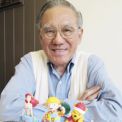
- Raw Material Suppliers and Factory Owners in the Beginning Stage of Plastic Manufacturing Industry
When Lam was an employee at Yuen Hing Hong Co. Ltd., the company expanded on its raw plastic material business, acting as an agent for importers from Britain, USA, Germany and Italy, from whom he bought and resold plastic materials to local factories. Lam once conducted a research for information about American plastic firms such as Monsanto, Dow Chemical, Rohm and Haas, and Du Pontetc. In those days, Yuen Hing Hong used to represent British companies like Distiller Plastic Groups, Imperial Chemicals Industries, Saro (High Impact Polystyrene Sheet), and British Celanese (Cellulose Acetate). Simultaneously, Yuen Hing Hong was an agent for Styrene Hair, which was artificial hair made of Styrene for toy dolls, and for nylon, which was used to make toothbrushes. In 1960, Lam was invited by Distiller Plastic Groups to go on training in the UK. Larger companies such as Monsanto and Dow Chemical had appointed their agents in Hong Kong from early on.
From 1947, some small-scale plastic factories in Hong Kong had been buying raw materials via Yuen Hing Hong to produce spoons, small bowls, combs, dolls, and imitation jewellery targeted markets in Southeast Asia. Yuen Hing Hong once sold perspex sheets to a mahjong factory on Wellington Street. Perspex sheet was a kind of plastic materials that were used to produce mahjong tiles, signs, lampshades, lamps, and umbrella handles. Winsome Plastic Works used to make sign stands which can be placed on reception desks. In the post-war period, major plastics works in Hong Kong were founded by wealthy Shanghainese industrialists, including Kader, Chong Yuen, Far East Plastic, Perfekta and Po Yuen initially produced toothbrushes. Early suppliers of plastic materials were Chinachem, Wo Foo Plastics, Tins Chemical and Wah Sun Hong etc. Chinachem was an agent for an American material called ‘US Chemical High Density Polyethylene 666’, while Wo Foo Plastics and Tins Chemical focused on making PVC materials. H.C. Chieng, a plastic tycoon who ran factories in Shanghai, moved to Hong Kong in 1946/47 and openedChong Yuen on Tam Kung Road, To Kwa Wan, making daily products such as plates and hangers.
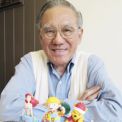
- Rough Start for First-generation Plastic Factory Owners
With the exception of rich Shanghainese industrialists, most Hong Kong-based toy manufacturers in the 1950s came from a humble background. Constrained by a lack of fund, technology and experience, they struggled to keep their business survived. Lam tried his best to help his industrial partners to solve their cash flow problem, so that they could get through dire situations. In the early days, the manufacturers usually raised money from their relatives before resorting to borrow from load sharks. They spent the money on running their businesses and sending their children abroad for school so that the children might come home and set up their own enterprises as well. Lam cited the examples of four of his industrial partners to show how early Hong Kong industrialists were zealous and were reliant upon each other to tackle the difficulties with limited cash flow.
1) When Lam was working at Yuen Hing Hong Co. Ltd, a factory owner, named Tong, established a factory on Wai Ching Street with several Three-Quarter Ounce Injection Moulding Machines. Tong once purchased 100 pounds of materials from Yuen Hing Hong but was not able to pay the balance of 300 dollars on time. Lam lent his whole month’s salary to Tong to pay for the materials without the knowledge of his own boss.2) The father of Wo Foo Group’s Chairman Joseph Lee came to Hong Kong from Ningbo, and built a hut out of iron boards at the bottom of Lee Garden. There, he boiled rosin in barrels and sold them to mahjong houses.3) The father of the chairman of the Federation of Hong Kong Industries Cliff Sun arrived in Hong Kong from Ningbo after the war, and rented half of a shop on Shantung Road, where he worked as a mechanic. He did not have the resource to install a telephone.4) A certain factory owner from Tianjin, who worked at Dah Chung Manufacturing Co. Ltd before, settled down on Yu Chau Street and installed four sets of Three-Quarter Ounce Injection Moulding Machines. These moulding machines could only produce products below the weight of 0.75 ounce. Once he was not able to pay the rent of 500 dollars, and Lam lent him 2 months’ salary so that he could get through the hard time.
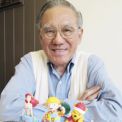
- The Methods of Collecting Funds Among the First-Generation Plastic Factory Owners (II)
Apart from bank loan, plastic industrialists also borrowed from loan sharks. Interest rate was rather harsh. At that time the government did not impose control on private loan. Those who reported to the government would lose their borrowing privileges. It was a common practice that creditors could not resort to legal means and intimidation to debtors who failed to repay. Lending was a lucrative business at that time. Borrowers could not get a full sum of loan. For example, a borrower only obtained $6,000 from a $10,000 -loan. Small Chinese-capital banks such as Canton Trust and Commercial Bank was used to extend credit to Chinese industrialists.
Lam had lent to numerous small industrialists. He once over-drafted two-month pay, i.e. $500, to help a customer of Yuen Hing Hong Co. Ltd. He also lent $5000 to an industrialist who was going to found his business. Lam reiterated that at that time industrialist were suffered from fund shortage when they started up their business. They only borrowed for their enterprise. Hong Kong’s toy industry thrived in the 1970s. Industrialists strengthened their financial status so they no longer relied on loan sharks. Lam only got collateral loans from bank. In most cases he picked HSBC as both parties had built up a long-term partnership. Usually he was able to secure a 30% loan while 50% was his maximum. Industrialists often obtained loan from small banks without putting down any collateral. Bank staffs tended to extract commissions from borrowers. This practice was especially popular in Taiwan.
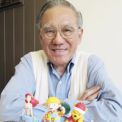
- The Hongs Controlled the Plastic Manufacturing Industry in the 1950s and 1960s
In the 1950s, apart from engaging in raw material business at Yuen Hing Hong Co. Ltd, Lam also ran a few plastic factories and met with clients frequently to obtain orders. Lam’s fine reputation in the plastic manufacturing industry helped him develop his business. Foreign-made toys generally did not register for trademark patent at that time, resulting that the Hong Kong manufactures simply replicated the design of foreign toys in the same way as the Japanese replicated German design. Local toy manufactures did not speak much English and so they replied on ‘hongs’ (exporters) heavily to find orders of export. Each time when a hong received the visit of a client from overseas, they would notify the local manufactures and arrange them to meet the clients at the hong’s office. The manufacturers would bring sample products to show to the clients. Lam spoke fluent English, which was his competitive advantage over his competitors in the industry. Most of his clients came from the UK and the US. The Americans specifically imported plastic goods for large retail stores such as K-mart and Wal-mart. It was a standard practice for the hong’s employees to get rebate from manufacturers in the early years. If they didn’t receive satisfactory rebate, sometimes these hong’s agents disclosed the sample design of this manufacturer to another competitor. This was known as ‘order transfer’. Lam recalled one occasion when he witnessed such transfer unfairly:
One of the products that Lam made was making good deals, but in one occasion, a deal was called off because the hong tried to suppress the selling price. A sales agent under Lam passed this product sample to another factory, which put this design into production as promoted by the hong to the importer client. When this action was finally revealed, Lam decided not to work with the hong again and demanded the hong to settle the dispute by:
1) Calling off the transaction with the importer client;2) Arranging placing the order with Lam’s factory again;3) Destroying the sample products that were leaked out.
The hong accepted the terms, as Lam pledged to take this case to the court if they did not do so. Lam never hired that salesperson again because he breached the rules. Even though there were no legislations regulating trademark patent, Lam thought he had a strong ground to bring an indictment against that hong. Lam also told his fellow industrialists about this inappropriate act which the hong used to work with. Lam believed that manufacturers at the early stage of post-war industrialization were not well educated and therefore were easily manipulated by the hongs. They encountered difficulty prosecuting for the hong’s liability when an ‘order transfer’ happened. A Jewish client had said heavy words to a factory owner, accusing the owner for asking unreasonable prices. Lam mobilized his industrial partners to boycott this Jewish hong. Lam could not tolerate any breach of copyright. He once turned his collaborative partners in to the authorities for counterfeiting two trademarked products, setting a precedent in the toy industry. As of result of Lam’s impartiality, he was well respected by his clients. Up till now, he had trained more than 30 of his staff to start their own businesses.

- The Emergence of Various Chambers of Plastic Factory Owners in the1950s and 60s as Venues for Information E...
The toy and plastic factory owners used to show solidarity in the old days, and they would always get together to share information. The first industrial association was the The Hong Kong Plastics Manufacturers Association (HKPMA). It composed of the more successful, larger factories. They organised mah-jong meetings and dinner gatherings every month. The smaller factories, which were not invited to join HKMPA, formed the Hong Kong and Kowloon Plastic Products Merchants United Association Limited (HKA) and The Chiu Chau Plastic Manufacturers Association Co., Ltd (CCA). Members of HKA shared a lot in common as they came from more grassroots background. The way larger and smaller factories received orders was different. Firstly, smaller factory owners went to the hong to meet clients collectively, and brought with them a range of product options. They coordinated with each other as to how the orders received for different products could be distributed among themselves. In those days, competition was not keen as the demand was sufficient enough to keep everyone afloat. On the other hand, larger factories went straight to the clients’ office or even invited the client to dine out to maintain customer relationship.
Secondly, some small factory owners ran around with samples of their products every day to introduce their products to potential customers. After meetings , the owners would meet up for tea. On the contrary, large factory owners sent sales representatives to visit their customers and seldom socialized with small factory owners. In this way, two different business circles were formed. Overseas buyers usually gave larger orders to larger factories. Sometimes, however, if the buyers intended to give a chance to certain small factory, they would place large orders as well. Small factories had lower production cost, and could offer more attractive prices to buyers. Lam was both the honorary chairman of HKPMA and HKA, while being a friend of CCA. That was why he was familiar with different styles of business operation. The leading companies in the HKA were Tai Nam, Shun Kwong, Sun Motor and Chun Yip. HKA had gatherings at Kin Kwok Restaurant in the Central. In 1996, Lam also joined the new Toys Manufacturers Association of Hong Kong.
